In an era defined by unpredictability, rapid technological advancement, and evolving consumer expectations, businesses, particularly in healthcare and project management, must embrace change not as a challenge, but as an opportunity. Organizations that fail to adapt quickly find themselves losing relevance, bogged down by inefficiencies, and unable to meet the demands of an increasingly complex landscape. Agile transformation is not just a methodology; it is a cultural shift, a mindset, and a strategic advantage that empowers organizations to navigate change with confidence, improve efficiency, and drive continuous innovation.
At Apstax Solutions, we have witnessed firsthand how Agile methodologies transform not just teams and workflows, but entire organizations. Agile is more than a framework for delivering projects—it’s a fundamental rethinking of how work gets done, how teams collaborate, and how businesses create value. The shift to Agile is not merely about adopting new tools or processes; it is about embracing a philosophy that prioritizes adaptability, transparency, and a relentless commitment to improvement.
Why Traditional Models Fail in Today’s World
For decades, organizations have relied on traditional, hierarchical management models that focus on strict planning, rigid processes, and lengthy execution cycles. These models thrived in a time when markets were stable, customer expectations were predictable, and change occurred incrementally. However, the world has evolved, and these outdated systems struggle to keep pace with the real-time demands of the digital age.
Healthcare organizations, for example, often face bureaucratic decision-making processes, slow technology adoption, and fragmented communication across departments. This results in delayed patient care, inefficiencies in hospital management, and compliance headaches due to evolving regulations. In project management, rigid Waterfall methodologies often lead to missed deadlines, cost overruns, and a final product that no longer aligns with shifting customer needs.
Agile emerged as a direct response to these challenges, inefficiencies, and barriers to innovation. It recognizes that businesses today must be more reactive to change, capable of doing more with fewer resources, and hyper-focused on delivering real, tangible value to customers and stakeholders. Agile does not eliminate structure—it redefines it in a way that promotes flexibility, speed, and collaboration.
The Cultural Shift Required for Agile Success
Embracing Agile is not as simple as implementing a Scrum board or conducting daily stand-ups. It demands a deep cultural transformation at every level of the organization. Leadership must shift from command-and-control management to servant leadership, where teams are empowered to make decisions based on real-time data. Employees must transition from following rigid processes to embracing iterative learning cycles, where feedback drives continuous improvement.
Resistance to Agile often comes from middle management, who may fear losing control or relevance in a decentralized decision-making structure. Teams may initially struggle with self-organization, unsure of how to operate without top-down directives. This resistance is natural, but it is not insurmountable. Organizations that invest in Agile coaching, training, and a phased approach to transformation see dramatic improvements in engagement, productivity, and adaptability.
A hospital system transitioning to Agile might initially face pushback from clinicians and administrators who are accustomed to traditional workflow structures. However, by gradually implementing Agile principles—such as iterative patient feedback loops, cross-functional collaboration between medical and IT teams, and real-time performance tracking—the system can significantly improve patient care, reduce inefficiencies, and enhance staff engagement.
Navigating Resistance to Change
Change is uncomfortable, even when it is necessary. Organizations that attempt to implement Agile without addressing underlying fears, uncertainties, and workplace dynamics often find their efforts stalling. The key to successful Agile transformation lies in creating an environment where change is not imposed, but embraced.
One of the most effective ways to reduce resistance is early and transparent communication. Leaders must articulate the vision for Agile transformation clearly—not as an arbitrary process change, but as a strategic move toward greater efficiency, innovation, and sustainability. Employees should understand not only what Agile is, but why it matters to them, how it benefits their roles, and what support will be provided throughout the transition.
Training and mentorship play a crucial role in easing the shift. Employees who receive hands-on Agile coaching—who experience Agile in action rather than simply being told about it—are far more likely to buy into the process. When teams see that Agile allows them to work smarter, collaborate better, and achieve greater impact, resistance begins to dissolve.
Consider an enterprise-level software development team struggling with constant project delays. Their traditional process required lengthy approval cycles, rigid documentation procedures, and little room for iteration. After adopting Agile principles, they shifted to smaller, incremental releases, real-time collaboration with end-users, and continuous feedback loops. The result? A 40% increase in development speed, improved software quality, and higher stakeholder satisfaction.
Agile as a Competitive Advantage
The organizations that thrive in today’s fast-changing world are those that don’t just react to change—they anticipate and drive it. Agile enables businesses to stay ahead of the curve, fostering a culture of continuous improvement and proactive decision-making.
Agile teams are empowered to experiment, learn from failure quickly, and iterate toward better solutions. This approach is particularly valuable in healthcare, where rapid advancements in technology, evolving patient needs, and regulatory shifts require constant adaptation. A telemedicine startup that embraces Agile can quickly test new features, gather patient feedback in real time, and adjust their platform based on real-world usage, rather than waiting for a massive, all-or-nothing release.
Similarly, large enterprises benefit from Agile by breaking down silos, accelerating product development, and aligning teams around a shared vision. Traditional, siloed business units often struggle with slow cross-functional collaboration, misaligned priorities, and duplication of efforts. Agile organizations, however, embrace cross-functional teams, rapid iteration, and a customer-centric approach, leading to higher efficiency, better products, and more engaged employees.
The Measurable Impact of Agile Transformation
The benefits of Agile are not theoretical; they are quantifiable, measurable, and proven across industries. Organizations that successfully implement Agile see:
- 30% faster project delivery times, thanks to iterative development cycles and reduced bureaucratic delays.
- 50% increase in employee engagement, as teams are empowered with autonomy, collaboration, and a sense of ownership.
- Significant cost savings, as Agile eliminates wasted time, redundant efforts, and inefficient workflows.
- Higher customer satisfaction, as Agile ensures frequent delivery of valuable, user-driven solutions rather than last-minute, large-scale deployments that miss the mark.
A major healthcare provider implementing Agile in its patient intake and scheduling system reported a 25% reduction in administrative overhead, allowing nurses and physicians to focus more on patient care rather than paperwork. Similarly, a financial services firm that moved to Agile saw a 40% increase in product deployment speed, resulting in a faster response to market demands and regulatory changes.
The Future of Agile: A Call to Action
Agile is not a trend—it is the foundation for modern business success. Organizations that commit to Agile transformation outperform, out-innovate, and outlast their competitors. They are faster, more adaptive, and better positioned to navigate disruption.
At Apstax Solutions, we partner with organizations to not only implement Agile, but to embed it into their DNA. Agile transformation is not about simply following a framework—it’s about unlocking the full potential of your teams, creating a culture of innovation, and ensuring that your organization is built for the future.
Change is inevitable. Growth is a choice. Will your organization embrace Agile and lead the future, or will it remain stuck in outdated models that no longer serve it?
Let’s build something better together.






